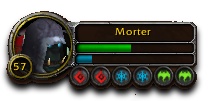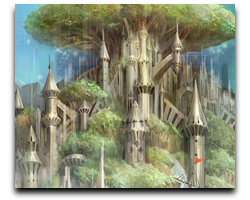 As Bob Dylan once wrote, “The times they are a-changin'” and id Software may be ready to change with these times. They’re talking at Quake Con about both DOOM 4 and their next title Rage (a first person shooter car driving game) both utilizing the same engine, the Tech 5 engine, and being developed simultaneously.
As Bob Dylan once wrote, “The times they are a-changin'” and id Software may be ready to change with these times. They’re talking at Quake Con about both DOOM 4 and their next title Rage (a first person shooter car driving game) both utilizing the same engine, the Tech 5 engine, and being developed simultaneously.
Now, this doesn’t mean you’ll have dual release games but it shows that id Software is ready to work on more than a single project at the same time, a big step for them. Although they’re usually working a big engine while finishing up a title to run on such an engine, they’ve got two titles in the works. This is very unlike the little FPS company but it shows they’re ready to meet the challenge of a larger industry.
When the original DOOM arrived there was nothing to compete against them and through the years and into Quake their competition was light years behind. Developers like Epic Games, Bungie and other first-person-shooter genre developers have proven themselves in the industry with many titles and sequels while id releases, seemingly, one game every five years.
For a company with only one or two franchise titles they do take a long time to release another game. This may be due to their engine licensing, no longer under the “Quake” engine name and sticking with its own independant naming convention like ID Tech 4 and ID Tech 5, they’re showing us the company is about engine design seperate from any demos or game prototypes they provide to show off the engine.
To many gamers DOOM 3 was more of a prototype to show people how far graphics have advanced in the last twenty years. Many folks were excited to play but grew bored when they realized it was very much like DOOM 2 but with a graphic revamp. Nostalgia only goes so far before you realize the story and depth behind games like Half-Life, Unreal and Halo have far exceeded a extreme graphical FPS gaming.
It’s time for id to grow from their roots and expand into many game genre’s and build out new independent properties (like Rage) to show the industry they’re not just a one-hit wonder with a huge fan base.
But, you can’t argue with a huge fan base. They’ve got a full conference to show off their stuff, not even Electronic Arts has that!
(Thanks, 1up)

 As the Wrath of the Lich King beta lives on, the world (and software behind it) is ever changing. Apparently, the rune system has changed a lot since its first inception. This requires a delicate balance, as the goal is a well rounded Death Knight class without epically overpowered features. Too much power and people will feel cheated while others feel overly destructive. End result, everyone would be a Death Knight.
As the Wrath of the Lich King beta lives on, the world (and software behind it) is ever changing. Apparently, the rune system has changed a lot since its first inception. This requires a delicate balance, as the goal is a well rounded Death Knight class without epically overpowered features. Too much power and people will feel cheated while others feel overly destructive. End result, everyone would be a Death Knight. Does the console market need any more competitors? We’ve seen record sales in the game industry for titles like Halo 3 and Grand Theft Auto IV along with huge expectations for Resistance 2 and some new Sony PlayStation 3 projects. Yet, the tiny little Wii product holds best sales records around the world as the heavy hitter, Microsoft and Sony, compete for the most awesome spectacle show of graphics.
Does the console market need any more competitors? We’ve seen record sales in the game industry for titles like Halo 3 and Grand Theft Auto IV along with huge expectations for Resistance 2 and some new Sony PlayStation 3 projects. Yet, the tiny little Wii product holds best sales records around the world as the heavy hitter, Microsoft and Sony, compete for the most awesome spectacle show of graphics. There is room to grow in the world of massive multiplayer online gaming. A large online community should not have to subscribe to a monthly charge to play great MMORPG’s because there are other known models that work, including the micro-transaction based MMO.
There is room to grow in the world of massive multiplayer online gaming. A large online community should not have to subscribe to a monthly charge to play great MMORPG’s because there are other known models that work, including the micro-transaction based MMO.
0 thoughts on “ID Software, Not Just One Game Anymore”